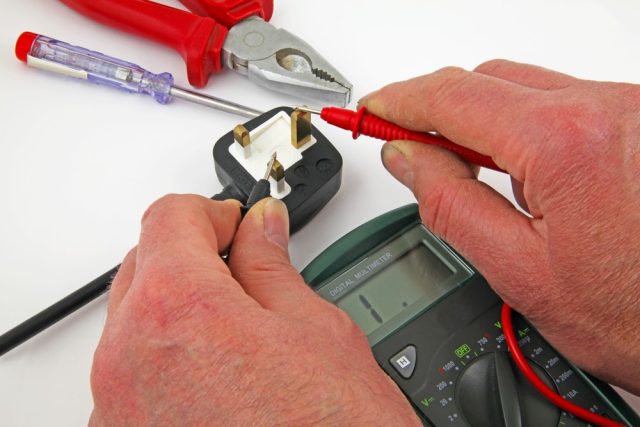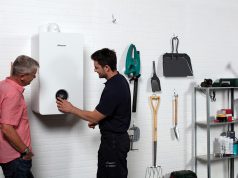
Portable Appliance Testing, commonly known as PAT testing, supports electrical safety in various environments. Whether you’re a business owner, a landlord, or simply concerned about the safety of electrical appliances, understanding what PAT testing entails is essential. This comprehensive guide will explore PAT testing, covering its purpose, regulations, and who should consider taking a PAT testing course.
What is PAT Testing?
PAT testing is used to evaluate the safety of electrical appliances and equipment. It involves a series of visual inspections and electrical tests to identify potential hazards and faults. The primary goal of PAT testing is to prevent electrical accidents, fires, and injuries by ensuring that appliances are in a safe and working condition.
Why is PAT Testing Important?
PAT testing is essential for several reasons, including:
- Electrical Safety: Ensures appliances are safe to use, reducing the risk of electrical accidents.
- Compliance: Helps businesses meet legal obligations and safety regulations.
- Risk Reduction: Minimises the chance of electrical fires and injuries caused by faulty equipment.
- Liability: Demonstrates due diligence and responsibility in case of accidents or insurance claims.
- Preventive Maintenance: Identifies and addresses appliance defects before they become hazardous.
- Peace of Mind: Assures that electrical equipment is working safely.
- Employee Safety: Protects the well-being of employees in the workplace.
- Property Protection: Safeguards property from damage caused by electrical faults.
- Legal Consequences: Non-compliance can lead to fines, penalties, or even imprisonment.
- Reputation: Enhances a company’s reputation by prioritising safety and compliance.
What Needs to be PAT Tested?
A range of electrical appliances and equipment should be examined. These include:
- Portable devices such as computers, microwaves, and kettles
- Movable equipment like extension leads and power tools
- Fixed equipment that is connected to the electrical supply via a plug or socket outlet
Each type of equipment has different testing requirements, depending on its class and usage. Regular testing ensures that potential defects or issues are identified and addressed promptly.
What are the PAT Testing Regulations?
In the UK, the Electricity at Work Regulations 1989 require businesses and landlords to ensure the safety of electrical equipment through regular testing and maintenance. PAT testing is the most popular method of doing this. Compliance with these regulations is essential to avoid legal penalties and, more importantly, to protect lives and property.
Who Should Do PAT Testing?
PAT testing should be carried out by competent individuals with the necessary knowledge and skills. While non-specialists can conduct essential visual inspections, more in-depth testing requires trained professionals. Here’s who should consider taking a PAT testing course:
- Qualified Electricians: Electricians have the expertise to address any electrical issues that may be found during the PAT process.
- Business Owners: If you own or manage a business, you are responsible for the safety of your employees and customers. Investing in PAT testing or having employees trained in PAT testing can help maintain a safe workplace.
- Landlords: Landlords are legally obligated to ensure the safety of electrical appliances provided in rental properties. Regular PAT testing helps meet these obligations and keeps tenants safe.
- Facilities Managers: Those responsible for maintaining extensive facilities, such as schools, hospitals, or factories, should prioritise PAT testing to prevent electrical accidents and ensure compliance with safety regulations.
- Individuals Concerned About Home Safety: Even at home, PAT testing can help ensure the safety of your family and property. While not required by law, regular testing can provide peace of mind.
PAT Inspections and Testing:
PAT testing is crucial for electrical appliance safety. It reduces the risk of accidents, fires, and injuries by thoroughly assessing appliances for potential faults. Certified PAT professionals should conduct the testing to ensure compliance with safety regulations. Here are the three standard procedures that are taken to conduct PAT testing:
- Pre-Use Check: Look for signs of damage, frayed cables, or any other potential hazards before using a portable appliance. You should also scan the area immediately surrounding the appliance for other hazards. If a fault is found, don’t use the equipment until a competent PAT tester examines it.
- Formal Visual Inspection: Perform a formal visual inspection more frequently than combined inspections and tests. Before starting, ensure that the equipment is turned off and unplugged. Then, thoroughly examine the following:
- Plug: Look for damage, burns, bent pins, cracks, and incorrect wiring
- Cable: Check for cuts, fraying, and abrasions
- Appliance: Look for cracks, burn marks, signs of corrosion, and wear and tear
- Mains socket: Inspect for cracks, loose fittings, and signs of overheating
- Environmental issues: Check for overloaded extension leads, trip hazards, fire risks, and water hazards
- Equipment Testing: Only competent PAT testers can conduct these tests. Use a PAT device to test earth continuity, insulation resistance, and lead polarity. The testing device shows if an appliance passes or fails the test. If it passes, attach a pass sticker showing the appliance’s pass date. If an appliance fails, it must be repaired or discarded. Any repaired appliance must pass another PAT test before reuse.
Conclusion:
By understanding the purpose and regulations surrounding PAT testing, you can take proactive steps to ensure electrical safety in various settings. Whether you’re a business owner, a landlord, or a concerned individual, PAT testing is crucial in safeguarding lives and property from electrical hazards.













